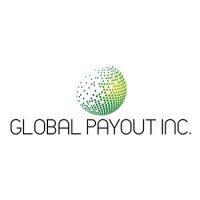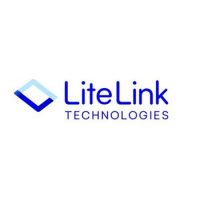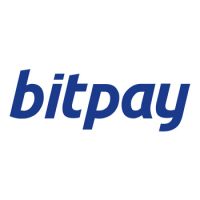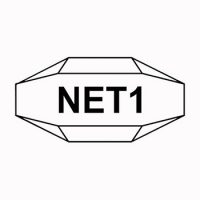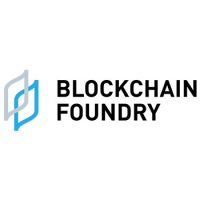Blockchain
Dain Leaders to conduct a PoC of blockchain technology of its International Student Matching Platform

Dain Leaders, a global leader in the blockchain edu-tech industry, has announced that it performed a proof of concept of the blockchain technology behind its international student matching platform.
The blockchain PoC is a project run by the National IT Industry Promotion Agency(NIPA). Dain Leaders performed the blockchain PoC of its digital history management platform for foreign students, which is expected to lower the administrative burdens associated with confirming the authenticity of documents during the admission process and to increase the reliability of the admission process.
In the past few years, the number of students interested in studying in Korean universities has rapidly increased. Indeed, a study found that there were 160,000 students from 180 nations enrolled in Korean language or bachelor’s degree programs in Korean universities as of this year, indicating the intense competition.
However, there have been recent cases in which the international students submit false or forged documents to work illegally, causing higher education institutions including universities to look for solutions. Moreover, due to COVID-19, many schools are experiencing financial hardship related to the decreased number of students and tuition freezes, creating cases in which school employees serving as brokers for illegal employment.
These problems can be solved by the digital history management platform for foreign students. By comparing the original files that are recorded as hash values on the blockchain and the files that are submitted from the universities for a review, the file’s authenticity can be confirmed.
Moreover, as the untact processing is increasing in the education industry, the platform is expected to serve as the new access point for the administrative tasks that were previously performed in-person.
“This blockchain PoC is to provide the solution for managing foreign student’s history and to reliably certify the documents. Even after this PoC, we plan to advance our technology by reflecting the feedback from its users including foreign students, the educational institutes, and the educational consulting firms,” said Lim Moo-ho, the CEO of Dain Leaders.
Dain Leaders is an edu-tech company that is leading the global education industry with its untact and big-data technology. It is dedicated to developing optimized and customer centered systems in various industries including domestic and international educational centers and corporations.
Blockchain
ONFA Fintech USA Partners with Metti Capital Funding to Accelerate Blockchain Banking and DeFi Expansion

ONFA Fintech USA – feat image
Blockchain
Blocks & Headlines: Today in Blockchain – May 16, 2025

A Pivotal Moment for Blockchain’s Many Frontiers
Today’s briefing arrives at a crossroads in blockchain’s evolution. From AI-driven Layer-1 grant programs to gamified resets in Web3, from supply-chain trust revolutions to exchange-driven token incentives, and high-stakes regulatory leadership shifts, the industry is charting new territory on multiple fronts. As builders, investors, and policymakers navigate this shifting terrain, five stories stand out for their potential to reshape blockchain’s trajectory:
-
Lightchain Protocol AI unveils a $150,000 developer grant program to onboard top builders in AI × blockchain.
-
Blockchain gaming experiences its lowest engagement of 2025, signaling a sector reset toward sustainability.
-
Norwegian Seafood Council research highlights blockchain’s trust-building power in global supply chains.
-
MEXC Exchange announces the Einstein (EIN) listing on July 20, 2025, buoyed by a $50 million rewards event.
-
Summer Mersinger, a US CFTC commissioner, is tapped as CEO of the Blockchain Association, marking a pivotal regulatory turn.
In this op-ed–style briefing, we’ll unpack each development, explore its implications for blockchain, cryptocurrency, Web3, DeFi, and NFTs, and assess how these narratives intersect to define today’s momentum.
1. Lightchain Protocol AI’s $150K Grant: Catalyzing Decentralized Intelligence
What happened: On May 15, 2025, Lightchain Protocol AI—a Layer-1 blockchain optimized for AI workloads—launched its Developer Grant & Ecosystem Incentive Program, pledging up to $150,000 in total funding to on-board teams building dApps, explorers, wallets, analytics dashboards, DeFi protocols, NFT platforms, and AI-powered modules on its network. Grants are milestone-based (up to $5,000 per milestone), accompanied by technical support, co-marketing, and ecosystem visibility. Source: Bitcoin News
Why it matters: Lightchain’s move underscores the growing fusion of AI and blockchain. By allocating resources to builders at the intersection of these technologies, the protocol signals that the next wave of innovation will hinge on intelligent smart contracts, federated learning coordination, and on-chain decision-making. For developers, this grant lowers barriers to entry and emphasizes sustainable, value-driven growth over token speculation.
> “We’re seeking impactful projects that align with Lightchain AI’s goal of bridging AI and blockchain—everything from AI prediction markets to compute marketplaces.” > — Lightchain Protocol AI Core Team
Implications:
-
DeFi & NFTs: Expect AI-augmented lending protocols and NFT platforms with dynamic metadata driven by on-chain models.
-
Ecosystem Growth: Lightchain’s aggressive grant strategy may spur competitors (e.g., Ethereum layer-2s) to bolster their own builder incentives.
-
Governance & Sustainability: The milestone-based approach aligns funding with tangible progress, a model DeFi DAOs may increasingly adopt for resource allocation.
Source: Bitcoin News
2. Blockchain Gaming’s 2025 Low: A “Reset” Toward Quality
What happened: According to Crypto.news, blockchain gaming saw daily active wallets dip to 4.8 million in April 2025—a 10% month-over-month decline and the lowest point of the year for Web3 gaming. Share of the DApp ecosystem for gaming fell to 21%, now tied with DeFi, while AI projects surged to 16% of on-chain activity. Funding also plunged nearly 70% from March to $21 million in April, though Arbitrum Gaming Ventures deployed $10 million from its $200 million fund to support titles like Wildcard, XAI Network, and Proof of Play. Source: Crypto.news
> “Capital is harder to secure, but that’s not necessarily bad. Weak projects are falling away, and funds are flowing into builders laying the groundwork for the next generation of blockchain games.” > — Sara Gherghelas, DappRadar Analyst
Why it matters: The downturn reflects a market recalibration from token-centric models toward user engagement, game mechanics, and interoperability—key for mainstream adoption. High-profile missteps (e.g., Square Enix shelving Symbiogenesis, Sega’s experimental launch of KAI: Battle of Three Kingdoms) contrast with enduring partnerships like Ubisoft + Immutable’s Might & Magic card game.
Implications:
-
DeFi and Gaming Convergence: As DeFi’s share remains steady, expect crossover innovations (e.g., on-chain staking integrated into gameplay).
-
Investor Focus: Sustainable tokenomics over ‘yin-yang’ hype; capital will favor projects with robust retention metrics and revenue models.
-
NFT Utility: Gaming’s reset may accelerate evolution of NFTs beyond collectibles into dynamic, utility-driven assets.
Source: Crypto.news
3. Deepening Trust in Seafood with Blockchain Transparency
What happened: Perishable News reported on May 15, 2025, that the Norwegian Seafood Council found 89% of consumers desire more information on seafood sourcing. Producers are piloting decentralized blockchain solutions to trace products “sea to shop floor,” sharing immutable data on species, harvest location, handling, and quality checks to reassure ethically conscious buyers. Source: Perishable News
Why it matters: While most blockchain discourse orbits finance and gaming, supply-chain applications represent a mass-market use case for Web3. Immutable provenance data combats fraud, illegal fishing, and mislabelling—an urgent concern as global seafood consumption climbs.
Implications:
-
Consumer Engagement: Brands adopting on-chain traceability can premium-price products by verifying sustainability standards, fair labor practices, and environmental impact.
-
DeFi Integration: Tokenized incentives could reward ethical producers or create staking mechanisms for supply-chain stakeholders.
-
Broader Web3 Adoption: Success in seafood may catalyze blockchain tracking in agriculture, pharmaceuticals, and luxury goods.
Source: Perishable News
4. MEXC’s Einstein (EIN) Listing & $50 Million Rewards Event
What happened: PR Newswire announced on May 16, 2025, that MEXC, a leading global crypto exchange, will list the Einstein (EIN) token on July 20, 2025 (UTC). To celebrate, MEXC has launched a $50 million EIN rewards event, offering incentives through trading competitions, referral bonuses, staking pools, and community tasks. Source: PR Newswire
Why it matters: Large-scale rewards events can drive short-term volume spikes and social engagement, but they also test community loyalty and tokenomics viability. EIN’s positioning as a “science-minded” utility token in educational and research partnerships adds thematic depth to what might otherwise be a routine exchange listing.
Implications:
-
Trading & Community Growth: Expect surges in trading volume, potentially setting new ATHs for MEXC’s platform metrics.
-
DeFi Crossplay: EIN holders may see integration into DeFi protocols for governance, liquidity mining, and educational grants.
-
Regulatory Watch: Large-scale token events continue to attract scrutiny over securities classifications and promotional compliance.
Source: PR Newswire
5. Summer Mersinger Becomes CEO of the Blockchain Association
What happened: Gadgets360 reported that on May 14, 2025, the Blockchain Association confirmed that Summer Mersinger, currently a commissioner at the US Commodity Futures Trading Commission (CFTC), will step down on May 30 and begin as the Association’s CEO on June 2. Mersinger has championed balanced, consumer-focused digital asset rules and will spearhead advocacy for fit-for-purpose legislation alongside US regulators. Source: Gadgets360
> “Summer’s knowledge of how elected officials think through complex questions will be vital as we await next steps on stablecoin and market structure bills.” > — Blockchain Association
Why it matters: The appointment bridges regulatory expertise and industry advocacy at a moment when Congress is eyeing stablecoin frameworks and broader crypto oversight. Mersinger’s shift signals a blurring of lines between government and industry, with potential to accelerate law-making and foster public-private collaboration.
Implications:
-
Policy Acceleration: Expect renewed momentum on stablecoin legislation, DeFi disclosures, and market-structure rules by August 2025, per administration timelines.
-
Industry Confidence: Firms may feel emboldened to innovate under clearer regulatory signals, supporting growth in DeFi, NFT marketplaces, and tokenized asset offerings.
-
Global Alignment: US-led regulatory frameworks often influence EU and APAC regimes—this leadership change could ripple through the international policy landscape.
Source: Gadgets360
Conclusion: Five Threads Weaving Tomorrow’s Blockchain Fabric
Today’s headlines paint a multifaceted portrait of blockchain’s ongoing maturation:
-
Ecosystem Incentives: Grant programs like Lightchain’s signal a builder-first ethos, turbocharging AI × blockchain synergy.
-
Quality Over Hype: Gaming’s dip reflects a necessary market reset, steering capital to sustainable, engagement-driven projects.
-
Real-World Utility: Supply-chain transparency demonstrates blockchain’s power beyond finance, enhancing consumer trust.
-
Tokenomics in Motion: Exchange listings and rewards events underscore the ever-evolving interplay between liquidity, community, and utility.
-
Regulatory Convergence: Leadership moves like Mersinger’s appointment highlight the tightening feedback loop between policymakers and the Web3 sector.
As blockchain, cryptocurrency, Web3, DeFi, and NFTs continue to intersect, today’s developments underscore a pivotal shift: the industry is moving from speculative frontiers to pragmatic, real-world applications—backed by funding, governance, and policy frameworks that prioritize longevity and trust. Keep these threads in mind as we watch the next chapters unfold.
The post Blocks & Headlines: Today in Blockchain – May 16, 2025 appeared first on News, Events, Advertising Options.
Blockchain
Saudi Arabia Loan Aggregator Market Report 2025: Retail Digital Payments Hit 70% as Tech Adoption Transforms Saudi Financial Services – Competition, Forecast & Opportunities to 2030
Saudi Arabian Loan Aggregator Market
-

 Blockchain Press Releases6 days ago
Blockchain Press Releases6 days agoBullish partners with the Gibraltar Government and GFSC to pioneer world’s first crypto clearing regulation
-

 Blockchain Press Releases4 days ago
Blockchain Press Releases4 days agoFintica AI and Mima Wallet Announce Strategic Partnership and Launch Joint Venture, Fintica Crypto Ltd
-

 Blockchain6 days ago
Blockchain6 days agoBlocks & Headlines: Today in Blockchain – May 12, 2025 | Rootstock, Zimbabwe Carbon Registry, Fastex, 21Shares, The Blockchain Group
-

 Blockchain3 days ago
Blockchain3 days agoBDM Digital Initiates Promising Dialogue with Stanford Law School in Pursuit of Strategic Partnerships in Silicon Valley
-

 Blockchain3 days ago
Blockchain3 days agoBlocks & Headlines: Today in Blockchain – May 15, 2025 (BTC’s Push, Pi Network Fund, Stablecoin Levers, JPM Pilot, OKX × Man City)
-

 Blockchain Press Releases7 days ago
Blockchain Press Releases7 days agoBybit Introduces BOB to P2P: Bolivian Traders Can Now Buy, Sell in Local Currency and Earn Commissions
-
Blockchain3 days ago
Wen Acquisition Corp Announces the Pricing of $261,000,000 Initial Public Offering
-
Blockchain3 days ago
Mercurity Fintech’s Subsidiary Grows Cross-Border Business Advisory Services with New Asia-Pacific Healthcare Client Engagement

















